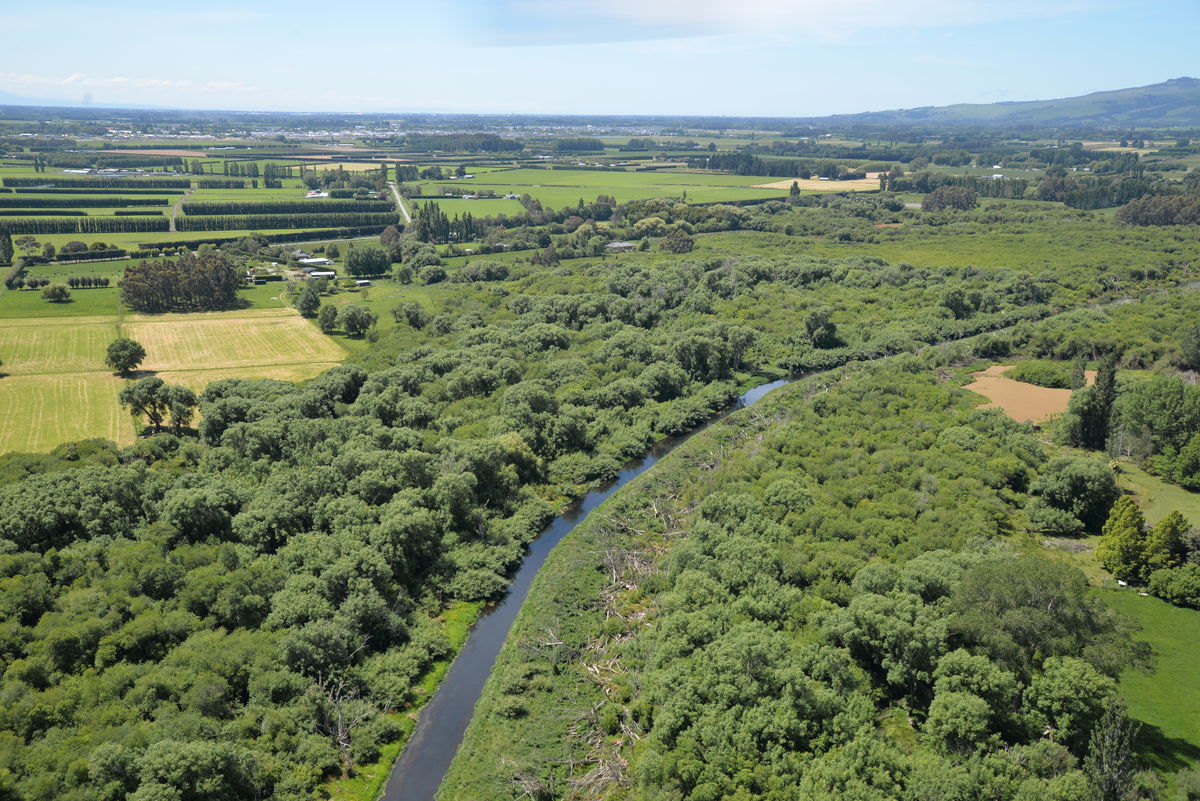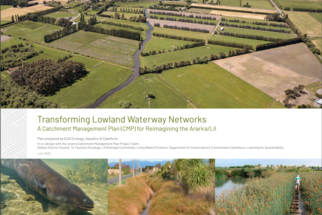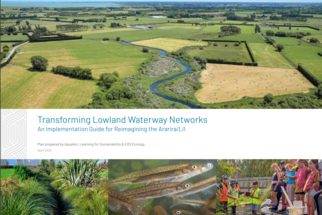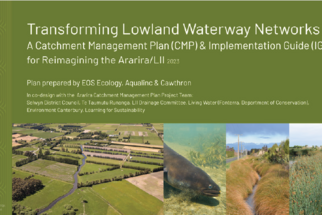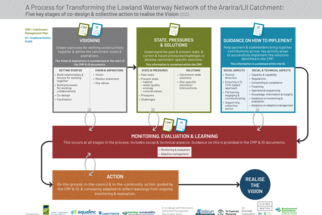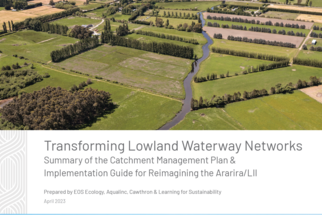
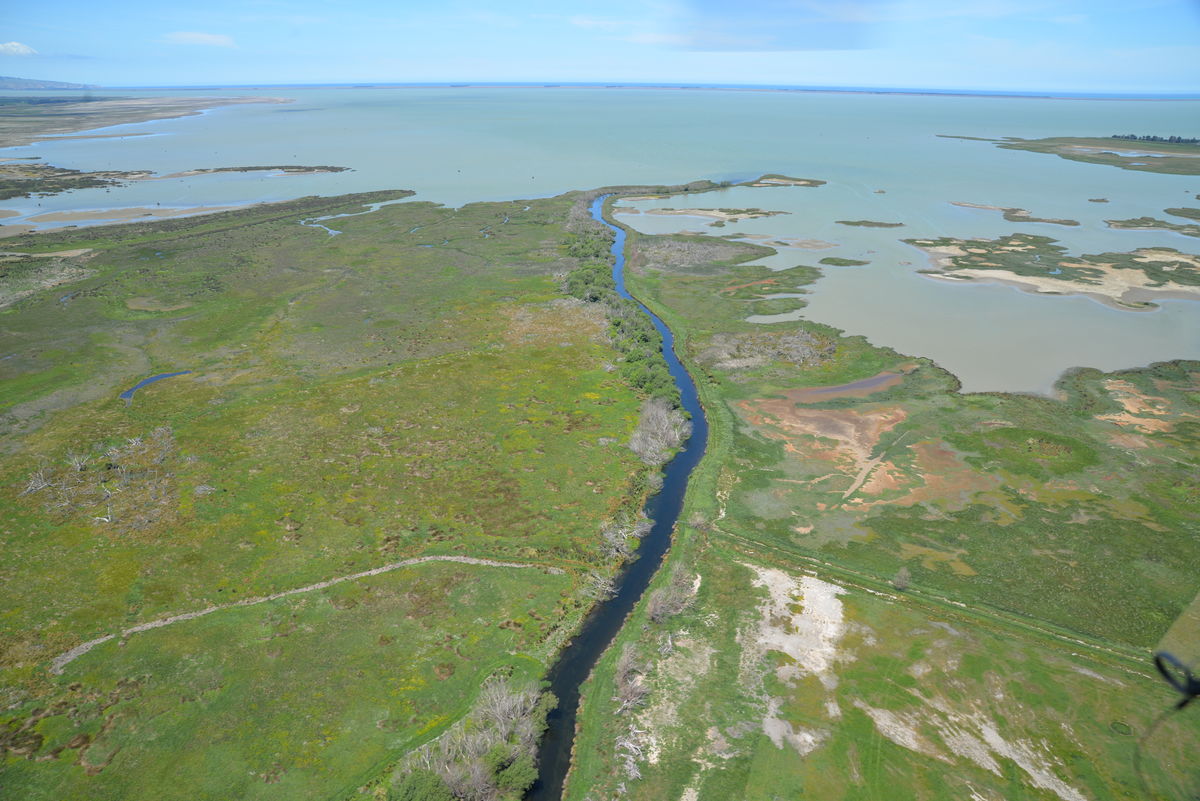
Ararira-LII Catchment Water Network Redesign Project
What is the problem?
In the 1800s early European settlers in the Ararira/LII catchment dug a network of artificial channels to drain extensive harakeke-flax/raupo wetlands and cleared native kahikatea/matai forests to use the land for farming.
Since then, these spring-fed drains have been managed primarily for drainage with little regard for indigenous biodiversity, ecosystem health or Māroi cultural practice.
The wetlands were once a rich source of mahinga kai for Ngāi Tahu and provided filtration and flood storage. Without them the freshwater biodiversity is forced to live in marginal habitat with poor water quality.
The current method of managing these drains is by diggers removing accumulated sediment and excessive aquatic weeds, leaving fish stranded and removing habitat. As the drains become deeper with steeper banks, they collapse into the waterway, causing more sediment and habitat loss. Even the terminology used to call these waterways “classified drains” signifies that they are of little value, but they are the only significant freshwater habitat remaining for our freshwater biodiversity on the Canterbury Plains and these smaller networks of waterways make up our larger streams, rivers and lowland lakes and estuaries.
What is the project?
The vision is to fundamentally change the management and how we value waterways by integrating ecological and cultural principles into the design of the drainage network, while acknowledging the importance of land drainage. This catchment redesign entails a significant shift in mindset and functional design of the drainage systems and their maintenance in order to support ecological and cultural values. The project offers a recipe for change and provides guidance in several crucial areas of activity to facilitate a collaborative and comprehensive approach to implementation.
The lessons learned from Living Water’s small-scale trials and from international and national research were applied to ensure the right interventions are being used in the right places, that key issues are being addressed correctly and solutions align to the values outlined above.
Long term, we’re hoping that this project will provide a recipe for other regional and district councils (water network managers) to reconsider their current waterway management and implement alternative approaches.
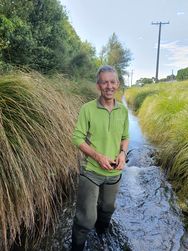
Robin Smith
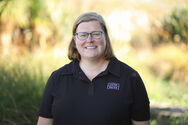
Katie Collins
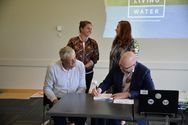
Drainage network redesign presentation at Intecoll 2021
Nicki Atkinson (Impact and Partnerships Manager) and Peter Savage (Fonterra Productive Landscapes Transformation Manager) presented at the International Wetlands Virtual Conference 10-15 October 2021
What was done?
We completed a Catchment Management Plan (CMP) and Implementation Guide (IG) for the LII/Ararira Drainage District. The project was carried out in co-design with a diverse Project Team, involving representatives from Fonterra, Department of Conservation, Selwyn District Council, Environment Canterbury, Te Taumutu Rūnanga, and the LII Drainage Committee and supported by consultants Aqualinc, EOS Ecology, Learning for Sustainability (Will Allen), and Cawthron Institute.
The CMP outlines how to manage the Ararira/LII Drainage network to enhance biodiversity and cultural outcomes while providing effective drainage. The CMP includes a suite of catchment-scale and 'toolbox' (reach-scale) solutions designed to improve the network of ephemeral, intermittent, and perennial waterways in the Ararira/LII catchment. The resulting plan has gained support from across the Project Team, and Selwyn District Council has already adopted some of its elements.
Developing and managing the restructured drainage networks to support ecological and cultural values, while also providing land drainage, will require a significant shift in the mindset of decision-makers and the functional design and maintenance of these systems. The CMP provides a vision for the desired outcomes of this change, and the accompanying IG offers guidance across a range of key activity areas to support a collective and joined-up approach to implementation and management.
The IG aims to help Selwyn District Council (and other councils that may adopt it) implement the CMP by identifying several crucial areas that can collectively support effective catchment transformation. These areas include developing a shared direction, ensuring a Te Tiriti-based approach, providing communication and engagement approaches that support collective action, capacity building, financial pathways, planning and consenting implications, alternative management or institutional arrangements, monitoring and evaluation, and the potential phasing of these social and technical activities that align with the broader range of values the catchment would be managed for.
The final plans were presented to Selwyn District Council and Te Taumutu Rūnanga in a celebration in April 2023.
The CMP and IG will enable Selwyn District Council to be "plan ready" to improve the health and mauri of Te Waihora and the Ararira/LII catchment.
These plans could also be applied to other drainage districts within the Te Waihora catchment and similar lowland regions across New Zealand.
What Living Water learnt from this project
- Demonstrated the benefits of co-designing a process that supports a change to waterway management - its as much a social (people) change process as a technical change
- Demonstrated efficiencies of working at a catchment scale
- Provided details of the cost and implementation pathways for alternative approaches for managing drains/waterways
- Demonstrated that managing for ecological and cultural benefits can co-exist with maintaining drainage
- Highlighted the benefits of a long-term strategic approach to address impacts from climate change that also improves the freshwater management in Aotearoa
What's Next?
- Builing on this work, we want to see if it is possible to cost lowland waterway redesign and management for the whole of New Zealand. We will start by estimating the total cost (and benefits) of catchment-scale restoration using the Ararira-LII catchment as the base scenario. This work is due to occur May-December 2023.
